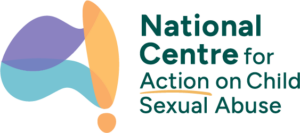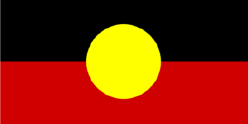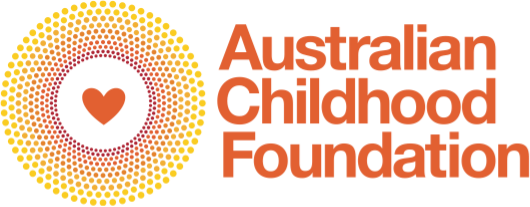When I was invited to join the panel for the National Centre’s In Conversation webinar, ‘Exploring the intersection of family violence and child sexual abuse’, my first thought was, how can I not have known about this? Links between domestic violence and child sexual abuse have been talked about sporadically in the literature from the early 2000s. An AIFS study in 2015 made broadly the same recommendations for action as the 2023 Child Maltreatment Study.1
The co-occurrence of domestic violence and child maltreatment more broadly has long been a known issue in the domestic violence field. So why does the child sexual abuse/domestic violence intersection seem like new information to many of us? I think there are three main reasons:
- Starting with second wave feminism, advocacy, service provision and research on domestic violence and sexual violence have developed separately and been separately funded, functioning, to borrow Marianne Hester’s concept, as separate planets;2
- the research-practice gap is well known; in medicine it takes around 17 years for new findings to impact practice;3 the sheer volume of research on domestic violence, sexual violence and child development combined with the overwhelm of practice means that key findings can too easily get lost; and
- our culture is deeply conflicted about child sexual abuse, with rhetoric about its horrors co-existing with systemic lack of action; the default position for far too many of us, is to turn away.
I want to reflect on two key insights from the domestic violence planet which we, as child sexual assault practitioners, will want to reflect on together:
- we now have a rich body of knowledge about children’s experience of domestic and family violence – what might that illuminate for us about the child’s experience of co-occurring child sexual abuse and domestic and family violence?
- we now know much more about the impact of domestic and family violence on parenting – what questions might that prompt us to ask about parenting where domestic violence and child sexual abuse co-occur?
Children’s experience of domestic and family violence
We now consider children to be victim-survivors of domestic and family violence, in their own right. In parallel with this shift, there is a growing strand of research amplifying children’s direct voice. Three powerful lessons have stayed with me from this body of work: children’s protectiveness; children’s agency; and children’s resistance.
Children’s protectiveness
In Parenting After Violence, Dana Coffey makes this incisive and poignant observation of child victim-survivors: “Many children hesitate to talk about the violence because they do not want their mothers to feel badly. Children are uncanny protectors and will often ‘err’ on this side of protecting their mothers, even at their own emotional expense.”4
Where child sexual abuse and domestic and family violence co-occur, might the wish to protect the non-offending parent be a factor both in minimising the negative impacts of domestic violence and in not disclosing sexual abuse? How can we make space for that in our practice?
Children’s agency
In her ground-breaking work on children’s experience of coercive control, Emma Katz encourages us to challenge the default perspective of children:
“the view of children as passive recipients of adult meaning-making is a key influence on seeing them as incapable of independently deciding to cease contact with their violent father…the understanding of children as ‘agentic subjects’ allows us to understand that children can be both manipulated into adopting the perpetrator’s view of violence and control and be sometimes able to resist that manipulation and make their own meanings.”5
To what extent do we see child victim-survivors of sexual abuse as agentic subjects? How might our practice change if we understood children as actively making sense of and decisions about their whole experience, both sexual abuse and domestic violence? How can we respond both to children’s capacity for agency and to children’s need for protection?
Children’s resistance
The concept of resistance to domestic violence was developed in 2005 by Calgary Women’s Emergency Shelter.6 In 2015 Callaghan and Alexander explored resistance with child victim-survivors. Children told the researchers about a range of creative strategies they used in situations of domestic violence: carefully managing what they say, and who they talk to, to control what is known about their family; redefining who counts as family to exclude abusers and include trusted non-relatives; creating dens and hideaways to go to with their siblings when violence was active; thinking of alternative worlds, fantasy spaces and fantasised futures; making a game of hiding, reclaiming childhood; and physical resistance.7 Similarly to Katz, they contrast children’s own accounts with the understanding of children which they argue has been held by “the rescuing professional”: children as passive recipients of the abuse experience who are “doomed to be damaged”.8
Resistance is a challenging concept in sexual violence practice, where we still encounter the myth that if a victim did not obviously ‘fight back’, then it ‘wasn’t really rape’, and where the concept that children can consent to sex is still a routine defence. Is it helpful to consider the much more nuanced definition of resistance developed in the domestic and family violence field? What might this lens illuminate, particularly where a child may be resisting both sexual abuse and domestic violence?
Domestic and family violence and parenting
Fish, McKenzie and MacDonald’s Bad Mothers and Invisible Fathers, published in 2009, was one of the earliest analyses of the laser-like focus on mothers and ignoring of fathers common to our understanding of parenting in domestic and family violence. The focus on mothers as ‘failing to protect’ children was unarguably the dominant response to domestic violence in child protection, with fathers rarely interviewed, included, or held accountable.9
The Safe & Together™ model promotes three core shifts in our understanding:
- recognising that the decision to perpetrate violence is a parenting choice, and mapping perpetrator patterns of behaviour as the source of harm to children;
- recognising the full range of the efforts made by most non-offending parents to promote the safety and wellbeing of their children; and
- interrogating our high expectations of mothers and low expectations of fathers, rather than taking them for granted.10
Coercive control and the attack on mothering
It is now understood that actively undermining the adult victim-survivors’ parenting and attacks on the mother-child relationship are core components of coercive control. In their 2017 research, ANROWS found that “fathers who are domestic violence perpetrators use control and denigration of women’s parenting as a common domestic violence tactic…(and)…use finance and systems such as Family Law as ways of perpetuating their control.”11
A review of Family Court judgements in Australia suggests that using Family Law as a tactic of control is often successful: “In 14% of cases, judicial officers expressed a direct or clearly implied belief that the allegations of child sexual abuse were true…just under two- thirds of allegedly unsafe parents had the time they spent with their child(ren) increased by the court…in 17% of judgements, children’s living arrangements were changed to the allegedly unsafe parent.”12
Parenting capacity
There are diverse perspectives on a mother’s parenting capacity after domestic and family violence. The bulk of the research argues that domestic violence decreases the parenting capacity of the adult victim-survivor and that children are often parentified. Improved parenting is a post-violence aim and outcome. Dana Coffey argues in Parenting After Violence that:
It may seem obvious that parents need to listen to their children. However, my work with mothers who were abused in their intimate relationships has shown me that listening is probably one of the most difficult things for parents to do – especially when what needs to be heard is a child’s anger, fear, blame, sadness, and grief about how domestic violence has affected their lives.13
In contrast, the Safe & Together model notes and articulates a range of protective behaviours which they argue most non-offending parents employ during the violence, aligning with the NSW Department of Community Services observation that “women are also noted actively working to compensate for the negative effects of the violence on their children.”14
Adult and child victim-survivors
My own research and experience in a Sydney refuge highlighted stark differences of perspective. Most of the women reported that their children did not talk to them about their experience of domestic violence, either because they were too young to talk or too young to have been affected, or because they were in fact not affected by the violence. Workers facilitating the children’s group had a very different perspective:
Children talk openly and comfortably in the group – once you give them an opening they talk…(about)…their resistance and resilience – their story of how they managed…times they felt very scared, and how they’ve dealt with worries before…their current worries – missing their dad but worried he knows where they live, hoping maybe one day dad gets better, being worried mum might go back. Most of the children don’t talk to their mother because they are worried that she would get too upset – children are very aware of their mum’s emotional state.
Staff in the refuge described a close focus on children’s wellbeing, but a lack of confidence in working directly with children, and particularly in raising concerns with women: “How do you say that (that you have concerns) to a mum? If FACS has been involved, she’s heard that (about those concerns) for years. There’s a gap between what we say to women and what we’ve heard from children.”15
When planets collide
I reflected then, and I do now, about the contrasts between my experience in women’s services and in child protection. One of my colleagues in Rape Crisis trained as a social worker and was horrified to realise that we did not have a child protection policy – because we saw women as victims, never as perpetrators.
In child protection, I remember repeated conversations where I said: we don’t remove children to punish ‘bad mothers’ or leave children to ‘reward victims’; what matters is the objective safety of the child – and where is the father in this? Child protection also confirmed that while women rarely perpetrate sexual abuse, they do physically, emotionally and psychologically harm children.
My work this year with a sexual assault service has raised my awareness that in a significant proportion of child sexual abuse, the person using violence is another child.16 We also now know that living with domestic violence is the third most common pathway to harmful sexual behaviour.17 And we also know how challenging and confronting it is for parents to accept that their child is using harmful sexual behaviours.
Research on complex trauma highlights the centrality of shame in the victim-survivor experience. Research on post-separation coercive control tells us that threat and fear continue. We know that in prolonged stress, we are designed to go into, and stay in, survival mode, where our fight/flight/freeze/appease responses are activated, and our focus narrows to what is necessary for survival.
How can we, as practitioners, hold realistic expectations of mothers, recognising both their protective behaviours and the impact of coercive control on their parenting capacity, while acknowledging that sometimes mothers abuse their children? How can we be part of shifting the low expectations of ‘invisible fathers’?
Practicing consciously with the co-occurrence of domestic and family violence and child sexual abuse will confront us with challenges of values, skill and confidence. Addressing these challenges requires a combination of commitment to evidence-informed practice and to scaffolding of practice which ensures that practitioners can safely unpack and explore deeply held values and expectations.
Working with complexity
My first assumption about the interrelation of child sexual abuse and domestic and family violence was of a dual perpetrator, in almost all cases, the father or stepfather. By reflecting on my experience and speaking with other practitioners, participating in this conversation and subsequently writing this blog, it is clear we need to broaden our focus to include a range of different ways in which child sexual abuse and domestic abuse co-occur. We could be working with sibling sexual abuse in the context of adult domestic abuse; we could be working with intimate partner violence and harmful sexual behaviour cooccurring in an adolescent relationship.18
Anais Nin famously said “we don’t see things as they are, we see them as we are.” Developments in neuroscience confirm that the human brain does more than react to what we see and hear – what we perceive is also shaped by our brain’s predictions about what will happen next. We see what we expect to see, and we hear what we expect to hear.19 If we expect child sexual abuse and domestic and family violence to be largely separate experiences, that’s what we’re likely to see and believe. For the 1000 of us who participated in the In Conversation webinar, we now have a more accurate perspective, so what we see will be closer to the truth.
Practicing consciously with co-occurrence will call on practitioners to reflect on how they see children, and what they expect of fathers and of mothers. Supervisors can support practitioner reflection, and agencies can ensure that their practice frameworks, service models and clinical governance arrangements effectively scaffold practice where child sexual abuse co-occurs with domestic and sexual violence as well as where it occurs alone.
Watch the full In Conversation webinar
References:
- Hume, M. (2003) Relationship Between Child Sexual Abuse, Domestic Violence and Separating Families; Children’s exposure to domestic and family violence | Australian Institute of Family Studies; The Australian Child Maltreatment Study – Medical Journal of Australia
- Hester, M. (2011) The Three Planet Model: Towards an Understanding of Contradictions in Approaches to Women and Children’s Safety in Contexts of Domestic Violence British Journal of Social Work 41(5)
- Implementing research results in clinical practice- the experiences of healthcare professionals – PMC; the most commonly quoted figure for the gap between new research and practice is 17 years: The answer is 17 years, what is the question: understanding time lags in translational research – PMC
- Coffey, D.S. (2009) Parenting After Violence: a guide for practitioners Institute for Safe Families; available at Parenting After Violence – Digital Download | Multiplying Connections
- Katz, E. (2015) Domestic Violence, Children’ s Agency and Mother-Child Relationships: Towards a More Advanced Model
- Calgary Women’s Emergency Shelter (2005) Honouring Resistance: how women resist abuse in intimate relationships
- ibid
- ibid
- MacDonald HZ McKenzie M Fish E Bad mothers and invisible fathers’: parenting in the context of domestic violence 2009
- About the Safe & Together™ Model | Safe & Together Institute
- Hooker, L. Kasie, R. Taft, A. (2015) Domestic and Family Violence and Parenting: Mixed methods insights into impact and support needs: State of Knowledge Paper; Kaspiew, R. et al (2017) Domestic and Family Violence and Parenting: Mixed methods insights into impact and support needs: Final Report
- Webb, N. et al (2021) Allegations of child sexual abuse: An empirical analysis of published judgements from the Family Court of Australia 2012 – 2019 Australian Journal of Social Issues 56; similar statistics were found in other research cited, where only 10% and 17% of allegations were believed. The experience of disclosure of child sexual abuse in the Family Court is the focus of my current research, see Investigating experiences of child sexual abuse disclosure and disbelief in the Family Court – The National Centre for Action on Child Sexual Abuse
- Coffey op cit
- Department of Community Services NSW (2002) Domestic Violence and its Impact on Children’s Development
- Do You See Me? Do You Hear Me? Responding to children and young people affected by domestic and family violence
- Who perpetrates child sexual abuse? | National Office for Child Safety
- Pathways to Onset of Harmful Sexual Behavior; The Australian Childhood Maltreatment Study (2023) op cit;
- Intimate partner violence among Australian 18–19 year olds | Australian Institute of Family Studies
- We see what we expect to see – The Neuroscience School










